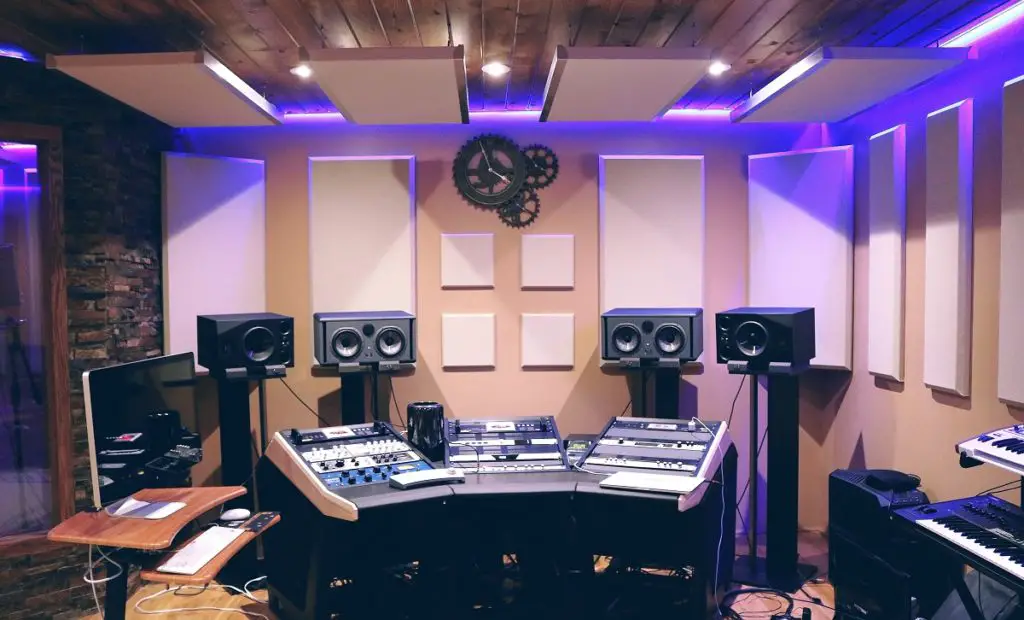
Setting up a studio at home shouldn’t be as difficult as it may seem at first. If you have a passion for production and music, do not limit yourself. You can start small in your garage or that extra room you have in your house that is currently being use as storage, then pick it up slowly as you build up your instrument collection. As you continue setting it up, you can consult professionals such as Prime Sound to understand the dynamics and functions of different instruments. With that knowledge, you will set up a working budget geared towards getting the essential apparatus at first as you progress to establishing a fully-fledged studio and production house. Here are a few tips that you will find helpful in setting up your home studio.
Consider Budgeting for Acoustic Treatment
There is that urge to jump straight into studio mixes and recordings when you are new in the business. It is crucial to have such equipment. However, with time, acoustic treatment will prove a vital component in your recording gigs. Let acoustic treatment be at the top of your priorities as you continue setting up your studio. Producing optimum music is a function of this segment of your studio, so make sure you have it in place before committing your money to any major purchases.
Get the Best Monitors
Monitors are a critical element of your studio set-up, so try and get the best. These monitors play a crucial role in giving you precision when recording your mixes. They let you perceive your sound in its clearest form, allowing you to adjust any off-key sounds easily. Therefore, consider researching and asking around before settling on any particular monitors based on your needs.
Make Your Music Portable
Making your music portable is a requirement when setting up your studio. Portable music means that you can listen to your music anywhere, at any time, and with the same consistency and quality. It does not matter if you listen using your headphones, car stereo, or in the club. The quality must be consistent if your studio is in good working condition. Portability allows you to work with others quickly and gives you the much-needed flexibility when you want to improve on your productions.
Have Open-Back and Closed-back Headphones
Having both kinds of headphones is critical when setting up your home studio. Open-back headphones assist you with longer periods of mixing and monitoring. They are not ideal for recording as they allow some sounds out that the microphone can pick up. Closed-back on the hand prevents sound from escaping and thus cannot enter the microphone when recording. They enable you to have clean records with no background noise. You can also use them for monitoring.
Keep Your Studio Soundproof
All studios ought to be soundproofed. When you are recording, you do not want unnecessary sounds to interfere with the quality of your recording. You want your mixes and productions to be as clear as possible. You also do not want to have issues with your neighbors since there are times you will have to play your music loud. Recording is a tedious process that can be extremely irritating to those not part of it. So ensure that you keep peace with your neighbors with a soundproof studio.
Use Sound Diffusers, Acoustic Panels, and Bass Traps
Diffusers are necessary to reduce that sterile feeling you experience in a room after absorbing sound reflections. These devices help disperse the resonances in the studio back, making it more lively. They also help eliminate echoes, ensuring you get clear-cut sounds. On the other hand, acoustic panels help absorb mid to high-range frequencies. They are, in most cases, made of fiberglass or foam. They help remove the excess reflections that the diffusers and bass traps fail to get rid of. Finally, bass traps help absorb those lower-range frequencies from sound sources within your studio.
Sample Rate
The standard sample rate is 44.1 kHz or 48 kHz. You can stick to this if you are starting. However, if you want to stick your guns out all at once, go straight for the higher sample rates of 96 kHz to 192 kHz. There are already many producers using that so that you can join the wagon of modern-day production.
Ensure Your Audio Interfaces are on Point
You must check your audio interfaces as they are critical for your studio. They are the connection point between your sound sources and your computer. If you get this wrong, you will have low recording quality, so ensure it is on the top of your priorities.